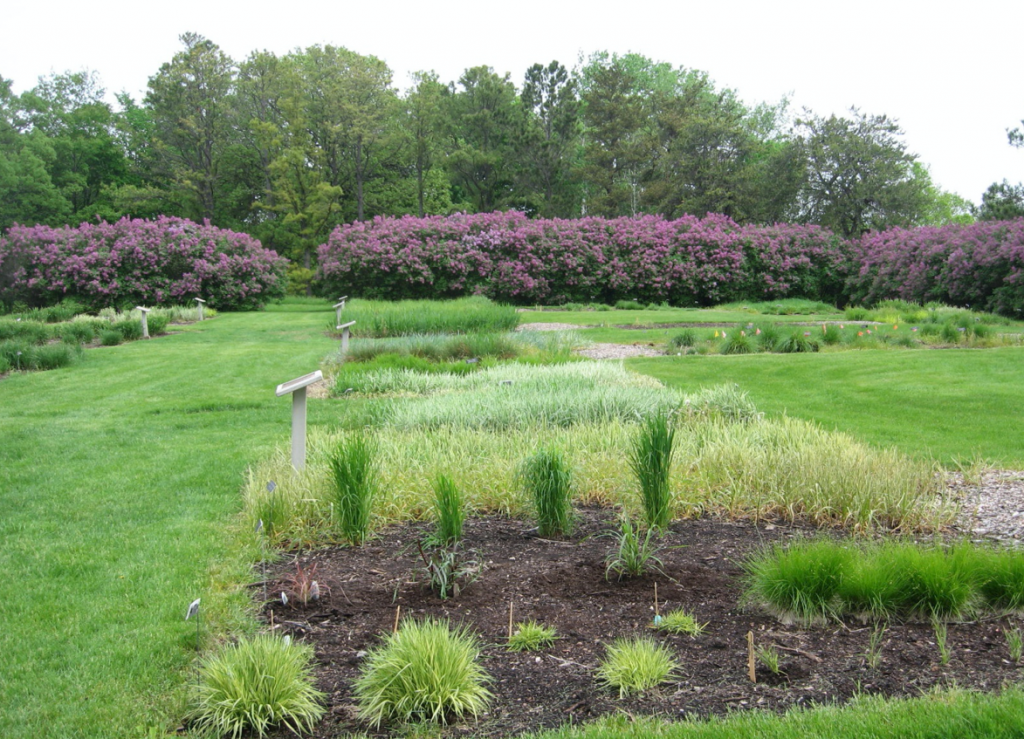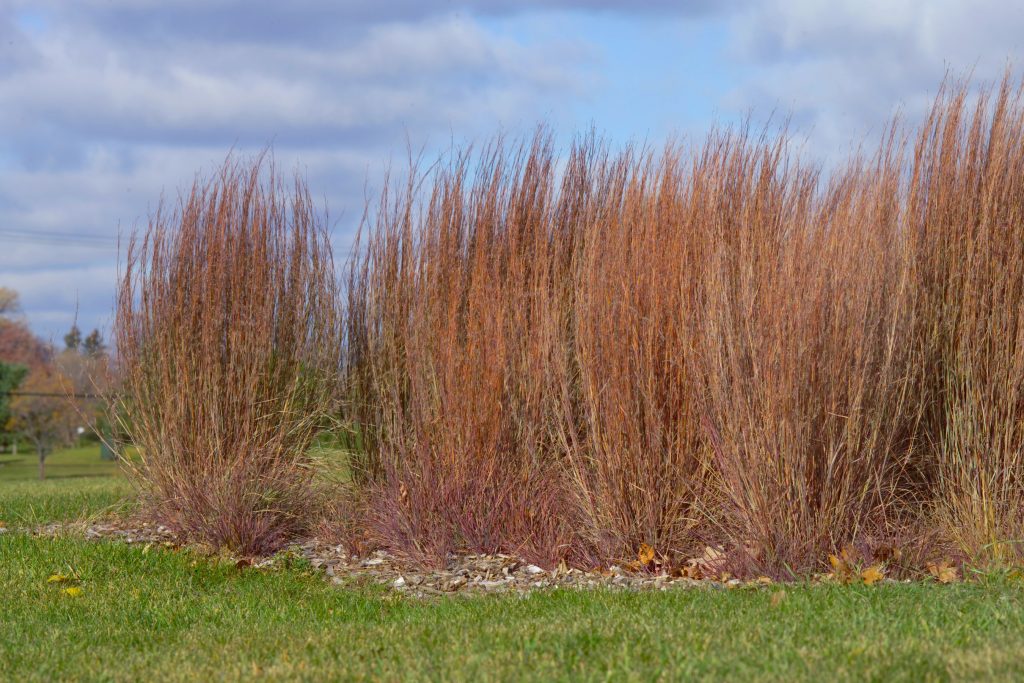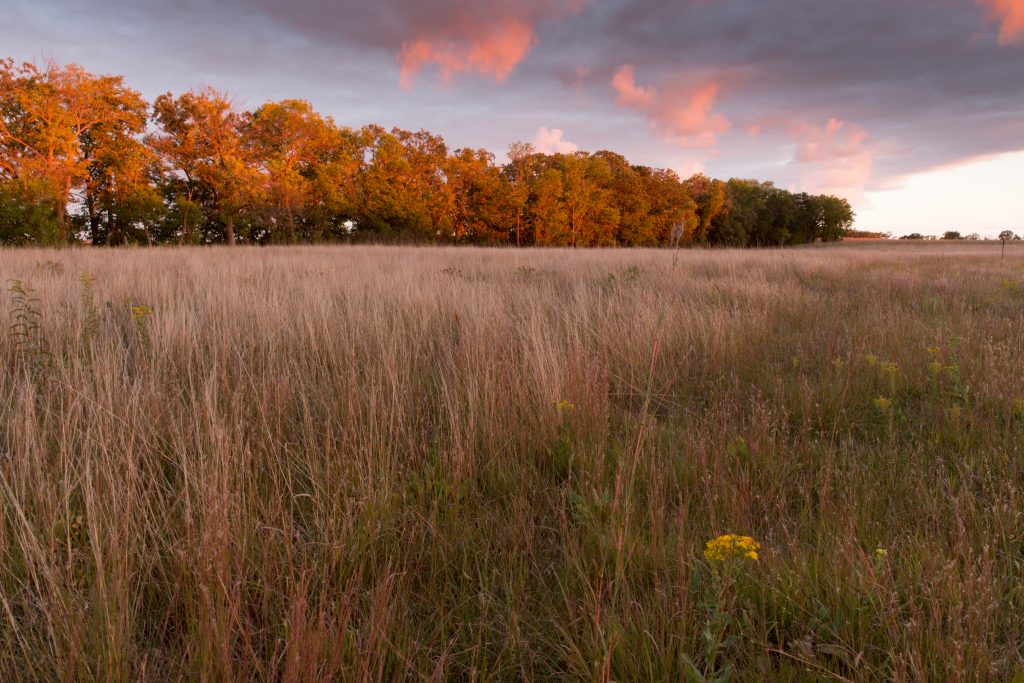Chapter 4. Planting, Maintenance, and Management
4.1 Planting

Planting
Grasses can be planted anytime starting from after the last frost in the spring to one month before the first hard freeze in the fall. However, planting in the spring in zones 3 and 4 provides the best chance of success. Only in the spring and early summer should you plant bare rooted grasses, like plugs or other small plants. In the fall, plant only large container plants with established roots and allow for at least one month of growth before winter. Nativars are only propagated as plants, not seed, in order to maintain their characteristic plant form and growth habit.
Make sure to give plants plenty of water until they are properly established. Supplemental water may be needed if grasses are planted in the summer. Once they are established, additional irrigation or watering is unnecessary for most native species.
Determine the spacing between plants according to the desired landscape effect and the plant’s setting. A good rule of thumb is to space plants equal to their mature height (plants 4’ tall are spaced 4’ apart), but you can plant farther apart if using them as specimen plants. To create a hedge or screen, plant grasses one-half their height apart from each other (4-foot tall grasses would be spaced 2 feet apart for a hedge).

Seed vs. Plants
If you are not concerned with specific plant placement, the planting is very large, or you are restoring a prairie, then establishing grasses from seed is the best option. Restoration projects that are a few thousand square feet or more should be seeded with native seed that will result in a diversity of genotypes and plants. Numerous resources are available to help with your specific needs and questions from the University of Minnesota Extension, The Nature Conservancy, and the Minnesota Department of Natural Resources.

Plants grown by themselves as the focus of attention in a lawn or garden.
The genetic constitution of an organism, as opposed to its physical appearance.

